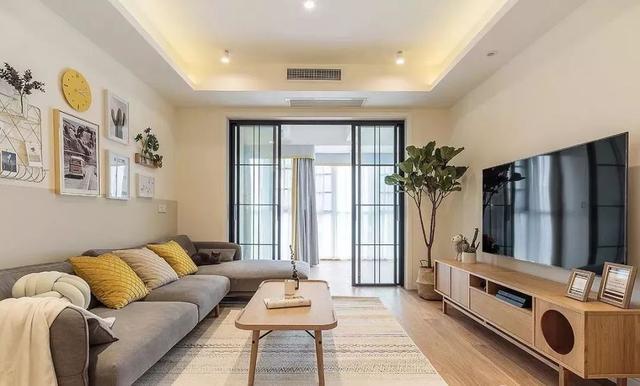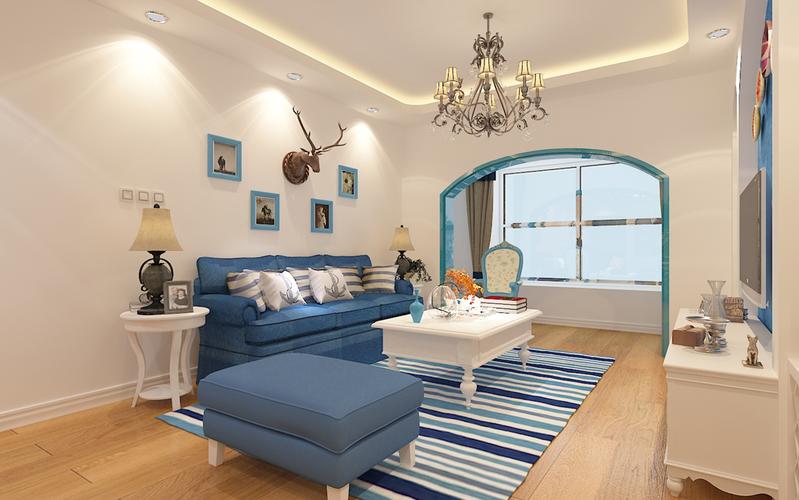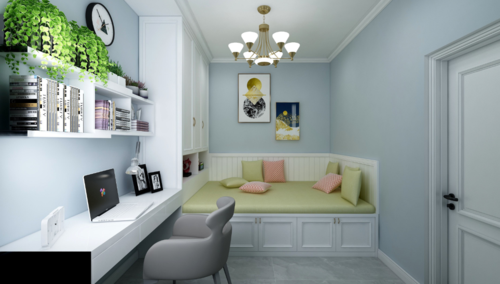买二手房能贷款吗-新型天花板装修材料

2023年4月25日发(作者:什么仪器测甲醛最准确)
Image Application of Photo-mosaic
Wang Wenxiu
School of Information Engineering,Politecnico di Milano,Como,Italy (22100)
E-mail:nju_wangwx@
Abstract
Photo Mosaic is an exciting art form made from thousands of small pictures, placed in patterns like
original mosaics made from colored cells, but each cell is an actual photo. This application is a little
program for to create mosaic made with photos with two different algorithms, one is Mean-Variance
and another one is Cauchy-Schwarz Inequality.
Keywords:photo-mosaic,image process
1. Introduction
Photo Mosaic is an exciting art form made from thousands of small pictures, placed in patterns like
original mosaics made from colored cells, but each cell is an actual photo. [4] So there are two
important parts for photo mosaic. They are the original image and the cell images also called tiles. The
Main Image is a single image that will be used to map the cell Images in order to create a photo mosaic.
And the Cell Images are the many pictures that make up the photo mosaic. When creating a Photo
Mosaic, each cell is analyzed and is optimally placed in patterns. [1]
This application is a little program for to create mosaic made with photos. To create such kind of
mosaic we need a collection of images that are going to be the tiles of the mosaic and we also need an
image to use for the original, as a matrix for the mosaics. The application is composed by 3 main
components: the main library which contains all the relevant code, an application to pre-process and
store them in the database and a front-end for the mosaic code in the library that lets the user control
the parameters (algorithm used, tile size, dithering, etc.) of the photo mosaic process.
2. Algorithms Details
Two different algorithms were used in the application. The first one is based on the mean pixel values
and image variance and it's been called “MV” (Mean-Variance); the second one also uses the chromatic
information from the mean values on the RGB channels, but uses the Matched Filter Detector in the
second stage; this algorithm is called “CSI”, from Cauchy-Schwarz Inequality.
2.1 Mean–Variance
The MV algorithm operates using the mean value on the RGB channels and the variance of the images.
In the first stage each images in the set is mapped as a point in a 3 dimensional space (RGB); then the
euclidean distance between each point and the input block:
dist=R−R+G−G+B−B
()()()
refirefirefi
222
1
is computed and the “closest” images are selected and used in the second stage. In the second
5
stage the variance of the 5 images is computed (after the scaling) and the image whose variance is the
most similar to the variance of the input block is
1. Five is an arbitrary number; if the number is too big there is the risk that unsuitable images are
carried on to the second stage; if the number is too small the dithering algorithm doesn't work well.
selected. This last step prevents a highly textured image to be used to cover an almost flat area and vice
versa.
- 1 -
2.2 Cauchy-Schwarz Inequality
The Cauchy-Schwarz Inequality [2] states that in a given vector space :
V
<v,w>≤w⋅v,
∀v,.w∈V
With equality holding if and only if :
v=w
α
The Matched Filter Detector is based on the principle that the inequality is maximized when the two
elements are linearly dependent; if and are functions then the linear dependency basically
vw
means that the functions have the same shape.
If we have a template signal
f(t)
and we want to select the best matching signal from a set
gt
i
()
of candidates, then the Matched Filter Detector states that:
best
=
argmax
i
<>
ftgt
(),()
i
gt
i
()
In the application the Matched Filter Detector is used to select an image from the samples set that
“looks like” the block from the input image; unfortunately the similarity granted by the MF Detector is
not enough, because it doesn't take into account the chromatic information when selecting the “similar”
image. [3] For this reason the MF Detector is used only as a second stage and operates on a set of
candidates selected using the color information. The first stage of the algorithms computes the mean
difference of intensity on the 3 RGB channels between the candidate and the input block:
diff=
R−R+G−G+B−B
refirefirefi
3
2
The best matches are then fed to the Matched Filter Detector for the final decision.
5
2.3 Dithering algorithm
Both algorithms tend to select always the same image to fill uniform areas; while technically correct it
creates a regular pattern that distract the observer from the overall picture. The dithering algorithm
works preventing any tile to be used more than once in a given area; in the current version the dithering
is done using a 3x3 (blocks, not pixel) matrix.
The algorithm works after the five images selected either by MV or CSI have been sorted using the
result of the algorithm. If the best – as selected by either MV or CSI – tile is rejected by the dithering
algorithm then the second one is tried and so on. If all the five tiles are rejected then one tile is chosen
randomly.
Even if the dithering matrix is small and the amount of available samples is limited the algorithm
works quite well in preventing the creation of spurious patterns. Tests have shown that on the one hand
enlarging the matrix doesn't improve the result since the number of tiles available is small (5); on the
other hand increasing the number of tiles may lead to worse results since tiles that have significant
differences from the input block may be used in the final decision.
3. Implementation Details
All the logic is encapsulated in the ImageLib library, that can be used with any front-end. All the photo
mosaic classes implements the same interface and hence are interchangeable. For API details see the
standard XML documentation.
Database
Images and their data is stored in a DBMS; in our application we used PostgreSQL, but any DBMS
2. Again, an arbitrary number.
- 2 -
with a .NET connector and BLOB support can be used to host the data. For each image the mean
values of the RGB channels are precomputed and stored in the time at insertion time; in this way there's
no need to recalculate them every time.
SimpleMosaic
The SimpleMosaic class is a proof of concept implementation of image selection based on the RGB
means. The class use its own synthetic set of tiles and does not use the database at all. The class if
provided for reference is not used in the test program.
MvMosaic
MvMosaic is the implementation of the “mean-variance” algorithm. Two version of the class are
provided:
– MvMosaic query the database for every input block, delegating the selection of the images using the
mean to the DBMS; this version puts a heavy load on the DBMS and due to a memory leak in
the .NET connector it ends up using a huge amount of memory.
– MvMosac2 is the implementation of the same algorithm, but query the database only at load time. All
the images are loaded at startup, scaled down to tile size and cached in memory; memory usage is
usually acceptable (about 50MB for 900 images and 8x8 tiles) but grows quadratically with tile size.
The cache makes this implementation very fast.
CsiMosaic
CsiMosaic is the implementation of the algorithm based on the Matched Filter Detector. Again, two
different versions are provided.
– CsiMosaic uses only the MF Detector and, while the output doesn't look quiet good, it is provided as
reference since it shows how the MF Detector operates.
– CsiMosaic2 uses the algorithm described in the previous sections, using chromatic information (mean
value on the channels) in the first stage and the MF Detector in the second stage to further refine
the selection. This class is intended for “real” use the output is rather good.
4. User Manual
Step:
1. Create a collection of tiles
2. First of all we need a directory where to store all the images to use as tiles of the mosaic. We can
select some images from Internet. The image have to be JPG or BMP files, they are the most used
format for photographs. We can also place the images in subdirectories for to organize better the
images.
The next step is to tell the program where the collection of images to use. The program will analyze all
the images and the result will be stored in the database. The database contains the basic information of
every image (the name of the image, the size, and the mean values of three channels).
(1). Execute “AddImage”
(2). Press the button “Add”
Fig 1. “Add” interface
(3). In the next window we have to select the images that to be used as tiles and then save them.
- 3 -
Fig 2. Select images
(4). Now the program will analyze all the images and store the information into database. We have
to wait that the program will reach 100%.
Fig 3. Wait for 100%
3. Create the mosaic
(1). Execute “Tester”.
(2). Set the parameters of the mosaic. We should set the tile size and choose the algorithm that you
want. MV algorithm is based on “mean-variance”, while CSI algorithm is based on the Matched
Filter Detector of the tile and the image.
Fig 4. MV algorithm
(3). In order to accelerate the speed of creating mosaic, we can load the image stored in
database to cache. We also have another choice “Dithering” which can make the effect of the
mosaic better. Press the button “Load cache” and then wait the program will reach 100%.
- 4 -
Fig 5. MV algorithm
(4). The last step is to create the mosaic. You only have to press the button “Mosaic” to choose a
main image. After the program reach 100%, we should choose the path for saving the mosaic of
the input image.
Results:
Fig 6. Output of the "MV" algorithm.
Fig 7. Output of the "CSI" algorithm.
5. Conclusions
The output of all the algorithms greatly depends on the number and the distribution of the images in the
database; for example if there are few “green” images and the input image has large green areas then
the result won't be good, regardless the used algorithm. For the tests I used a database of about 900
images and MvMosaic and CsiMosaic both provides a good output that closely resembles the input
image.
Both algorithms will remove details that are smaller than the tile size and tend to behave badly when
the must cover uniform areas (they create a textured area) even with the dithering check enabled. An
example showing the worst case scenario is the Stonehenge image: the sky and the grass are almost
- 5 -
uniform, with the grass having a fine grained texture; the columns have small gaps between them that
prove to be very hard to be handled.
References
[1] R Raskar, J van Baar, “A Low-Cost Projector Mosaic with Fast Registration”, Asian Conference on Computer
Vision (ACCV), 2002
[2] G Buskes, A van Rooij, Almost f-algebras: Commutativity and the Cauchy-Schwarz Inequality, Birkhäuser
Basel, 2000
[3] G Turin, An introduction to matched filters, Information Theory, IEEE Transactions on, 1960
[4] Site about How-To: Make your own photo mosaics
/2004/10/19/how-to-make-your-own-photo-mosaics/
- 6 -
地面铺砖图片效果图-必出贵人的四大住宅风水

更多推荐
马赛克图片效果图







发布评论